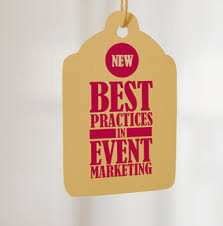Introduction
In today’s fast-paced digital landscape, traditional marketing approaches are swiftly giving way to innovative strategies that leverage the power of the online realm. One such transformation is the shift from physical marketing collateral to its digital counterpart. As businesses adapt to changing consumer behaviors and preferences, the transition to digital marketing collateral offers a multitude of advantages, enabling companies to reach wider audiences, engage with customers more effectively, and track performance in real-time.

The Evolution of Marketing Collateral
Marketing collateral, in its traditional form, includes printed materials such as brochures, flyers, business cards, and posters. While these materials have served businesses well for decades, the digital age has introduced new avenues for engagement. Digital marketing collateral encompasses a range of assets, including:
- Online Brochures and E-Brochures: Instead of printing physical brochures, businesses can now create interactive online versions that can be easily shared via email, social media, or websites. These e-brochures can incorporate multimedia elements such as videos, animations, and clickable links for a richer user experience.
- Infographics: Infographics translate complex information into visually appealing formats. When shared online, they are easily shareable and can go viral, spreading brand awareness.
- Interactive Presentations: Digital presentations can be made interactive with features like clickable navigation, embedded multimedia, and real-time polling. These presentations are ideal for webinars, online workshops, and virtual events.
- Video Content: Videos have become a dominant form of online content. Businesses can create promotional videos, product demos, and tutorials to engage audiences and convey messages effectively.
- E-Catalogs: Rather than printing physical product catalogs, businesses can create digital versions that are easily accessible on websites or through email campaigns. These catalogs can be updated in real-time without the cost of reprinting.
Benefits of Going Digital
- Cost Efficiency: Printing and distributing physical marketing collateral can be costly. Going digital eliminates printing expenses and allows businesses to allocate resources more strategically.
- Global Reach: Digital collateral can be shared globally in an instant, breaking down geographical barriers and expanding the brand’s reach exponentially.
- Real-time Tracking: Digital collateral enables businesses to track engagement metrics such as clicks, shares, and conversions in real-time, providing valuable insights into what works and what needs improvement.
- Interactivity: Digital assets can be interactive, encouraging user engagement and participation. This interactivity enhances the overall user experience and encourages deeper connections with the brand.
- Environmental Sustainability: Embracing digital collateral contributes to reducing paper waste and a company’s carbon footprint, aligning with eco-friendly values.
Conclusion
The shift from traditional to digital marketing collateral is a strategic move that aligns with the evolving preferences of today’s consumers. By harnessing the capabilities of digital platforms, businesses can create engaging, dynamic, and cost-effective marketing materials that resonate with audiences worldwide. As the digital landscape continues to evolve, embracing this transformation will be pivotal in staying competitive and relevant in the ever-changing world of marketing.